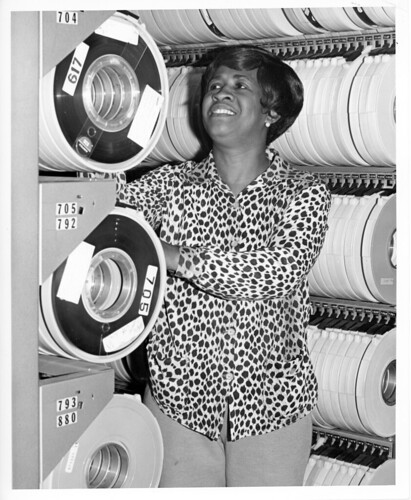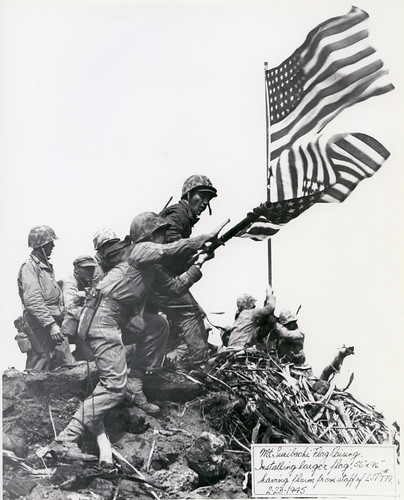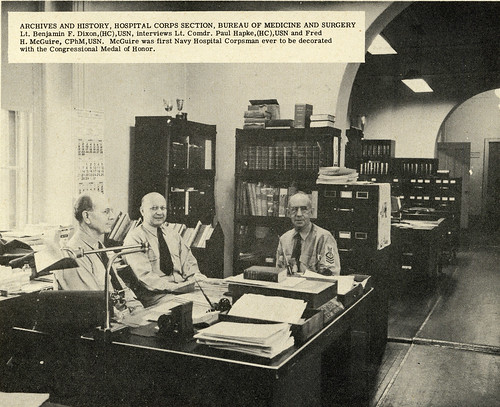Interview: Navy Medicine on Flickr Commons
Jessamyn emailed with Michael Rhode, the Archivist at U. S. Navy Medicine who manages the organization’s Flickr account on Flickr Commons to talk about how they’ve been using Flickr to find new audiences and post historical and current images.
Navy Medicine has been a Flickr Commons member since 2011. What made you interested in becoming a member?
I had previously been the archivist of the National Museum of Health and Medicine, and started posting photos for its Otis Historical Archives. The staff were asked to post their favorite photograph that they found when cataloguing and scanning images that week. BoingBoing mentioned the site, and our hits blew up. So, when I joined Navy Medicine, I looked at reinvigorating their Flickr account. The thought of unlimited storage to share US Navy medical images at no cost with a wide audience was perfect. In the past, the annual fees had always been difficult to get approved.
We’re looking at opening The Commons to new members in 2024. What information, tools, and processes did you need when you began? Have they changed over time?
I find the Commons to be pretty intuitive, but that’s possibly because I personally have been a long-time Flickr user. I think most public-facing collections will understand the advantages offered. I do not have any special processes beyond tracking the images in a spreadsheet. I also have a spreadsheet capturing our daily viewership numbers.
How do you determine what you want to upload? Has this changed over time?
Originally, the account was set up by our public affairs department and was used to highlight events in Navy Medicine, often at the headquarters level. It was an opportunity to highlight Navy Medicine Sailors and the work they do in support of the military’s missions…
When the historian’s department was merged into the overarching Communications division, I asked if I could start using the account. I was posting historical images for years, including a ‘this day in Navy medicine’ photograph.
COVID-19 changed all that. I began working from home and wasn’t scanning historical images at work anymore. I pivoted to trying to capture covid images from Navy medicine around the globe. From finding that material, it was a simple thing to then begin posting any images that Navy Medicine released across what we refer to as ‘the enterprise.’ After Covid waned, I still had subscriptions to all the feeds from various locations and units, so I’ve continued posting more current items than historical ones, especially when I was physically co-located with my colleagues a year ago.
What challenges did you face?
A major challenge was, and is, finding interesting material. A lot of photographs taken these days are promotion or retirement ceremonies and may have a more limited viewership than a war-time picture of a Hospital Corpsman patching up a wounded Marine on an island in the Pacific. The images still have a purpose, but are less likely to break through to a broader public.
What kinds of positive results have you had? (And, any negative ones?)
We haven’t had any negative results that I’ve seen. Positively, a lot of people are seeing various aspects of Navy Medicine, and what some of their taxes pay for. It’s especially useful to sharing to a different community than the one that is reached by the Defense Visual Information Distribution Service (DVIDS) which is where I collect a lot of images from. They’re usually only reaching people in the service or reporters.
Our Flickr site reaches anyone interested in Navy Medicine and its history.
Do you have any particular photo that has a story behind it, either in the photo itself, how it was used, what sort of community reaction you got, or something else?
Particular photo? That’s a tough one. This is our most-viewed image…
…and I have no idea why it is. It’s a pretty basic shot with almost no information, but has over 10,000 views ahead of the next most popular one.
Here’s one – the standard photograph of the World War II raising a flag on Iwo Jima is well known and the basis for a statue near Arlington Cemetery. But other images were taken, and this is one of them…
…and a Navy Hospital Corpsman was at the event.
Or you could look at this image…
…the site of the present day Walter Reed National Military Medical Center, with the National Institutes of Health across the street, and marvel at how empty it was in 1941.
Or on a personal level, see our predecessors in the history office 80 years ago here…
Especially for the historical photographs, there are so many stories behind them!
I was wondering if you had any thoughts to how the “no known copyright restrictions” license works (or doesn’t work) for the sort of content you’re sharing.
From our point of view, these are US Government work products and as such, are in the public domain. Copyright isn’t a consideration for them.
I notice you tend to curate your collections into albums often (we just did a blog post about albums and galleries so this is fresh in my mind). What goes into your process for doing this? Do you only do it when you upload or do you sometimes go back and arrange images for other purposes?
Photos go into albums when being uploaded, although new albums are created on an as-needed basis. As a military organization, we’re fairly structured compared to other institutions, so it’s easy to put material into categories such as Corps (Medical, Dental, Nurse etc) or Facility (hospitals, bases, etc), or Ships (hospital ships, ships staffed with medical personnel, ships visited by medical personnel). Then I can refer the person who needs historical images of Naval Hospital Bremerton to one place for their research.
I rarely go back and re-arrange images into new albums partly because with 23,000 images, it’s a lot of work. So we have three Nurse Corps albums now, and two were created before I took over managing the collection, but I just add new photographs to all three. Someday I’ll combine them all into one, but it’s not high on my list. I do enjoy seeing when someone favors an image or adds it into a new album or gallery though. I check the little alarm icon every day, and am frequently surprised. A 1948 shot of a Nurse bowling gets galleried a lot (although I think she might be playing duckpins).
You can also check out this Just the Cakes gallery we made from their account. The Navy loves cake.



















